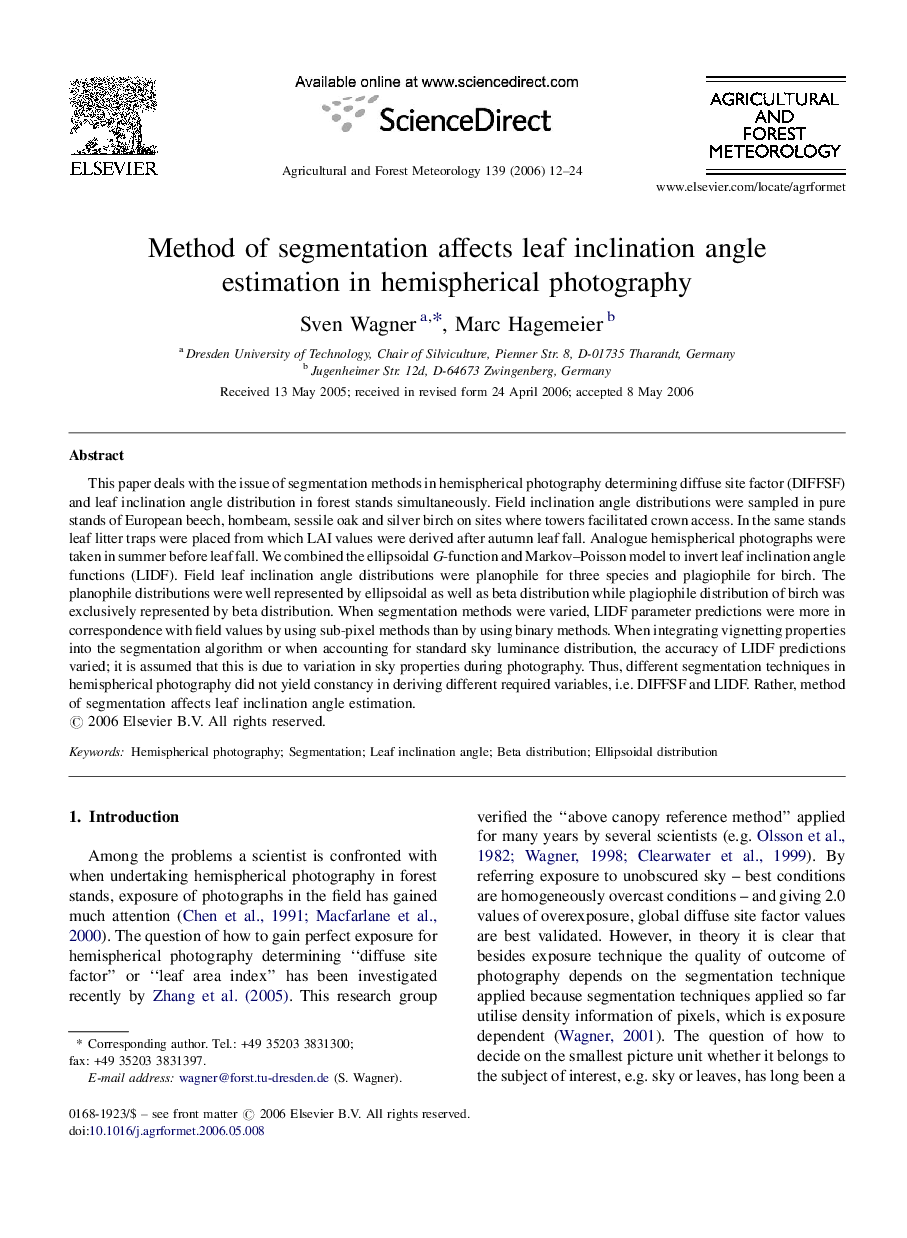| Article ID | Journal | Published Year | Pages | File Type |
|---|---|---|---|---|
| 82651 | Agricultural and Forest Meteorology | 2006 | 13 Pages |
This paper deals with the issue of segmentation methods in hemispherical photography determining diffuse site factor (DIFFSF) and leaf inclination angle distribution in forest stands simultaneously. Field inclination angle distributions were sampled in pure stands of European beech, hornbeam, sessile oak and silver birch on sites where towers facilitated crown access. In the same stands leaf litter traps were placed from which LAI values were derived after autumn leaf fall. Analogue hemispherical photographs were taken in summer before leaf fall. We combined the ellipsoidal G-function and Markov–Poisson model to invert leaf inclination angle functions (LIDF). Field leaf inclination angle distributions were planophile for three species and plagiophile for birch. The planophile distributions were well represented by ellipsoidal as well as beta distribution while plagiophile distribution of birch was exclusively represented by beta distribution. When segmentation methods were varied, LIDF parameter predictions were more in correspondence with field values by using sub-pixel methods than by using binary methods. When integrating vignetting properties into the segmentation algorithm or when accounting for standard sky luminance distribution, the accuracy of LIDF predictions varied; it is assumed that this is due to variation in sky properties during photography. Thus, different segmentation techniques in hemispherical photography did not yield constancy in deriving different required variables, i.e. DIFFSF and LIDF. Rather, method of segmentation affects leaf inclination angle estimation.
